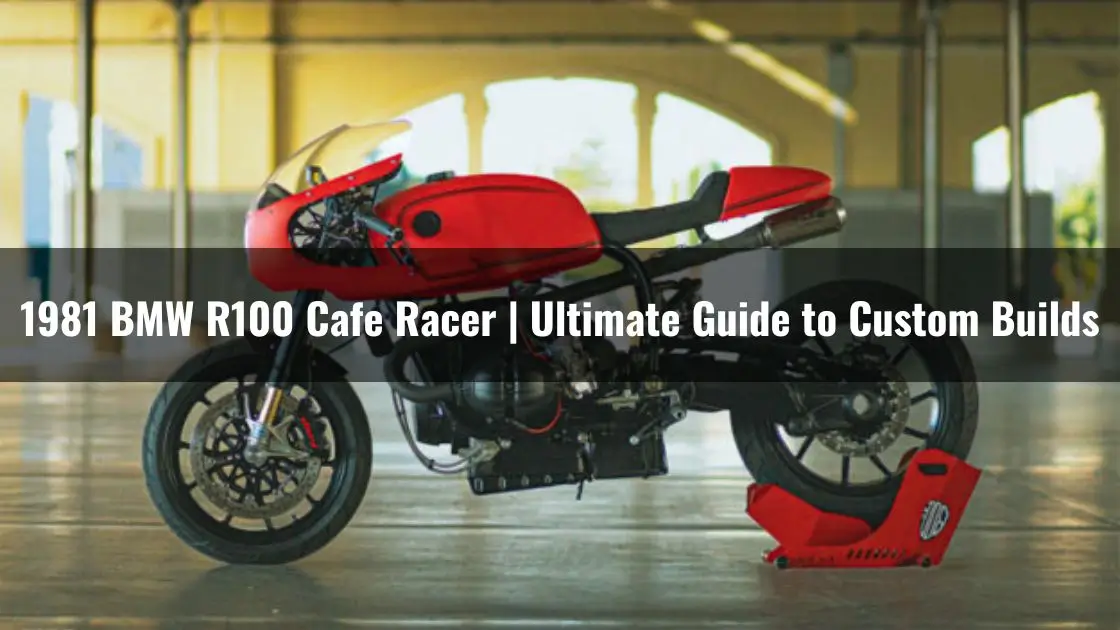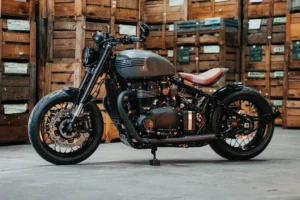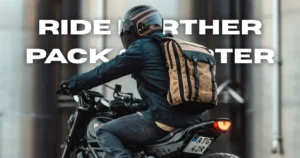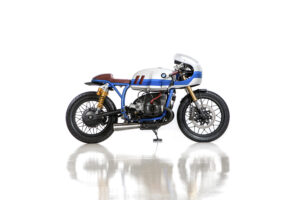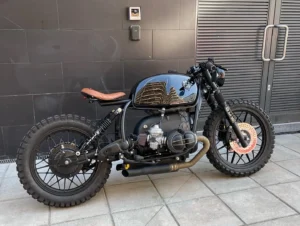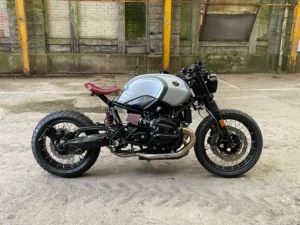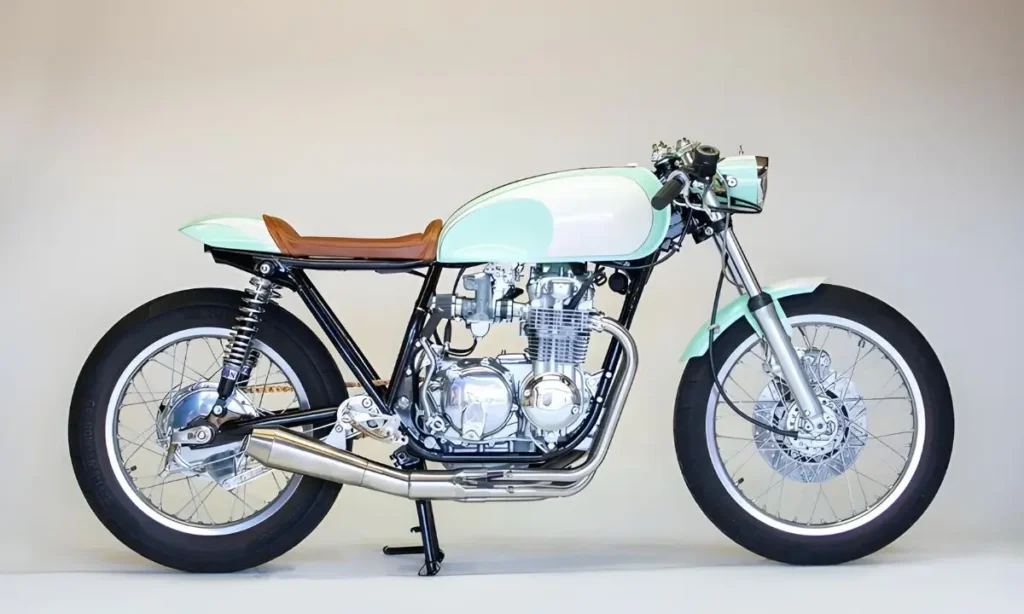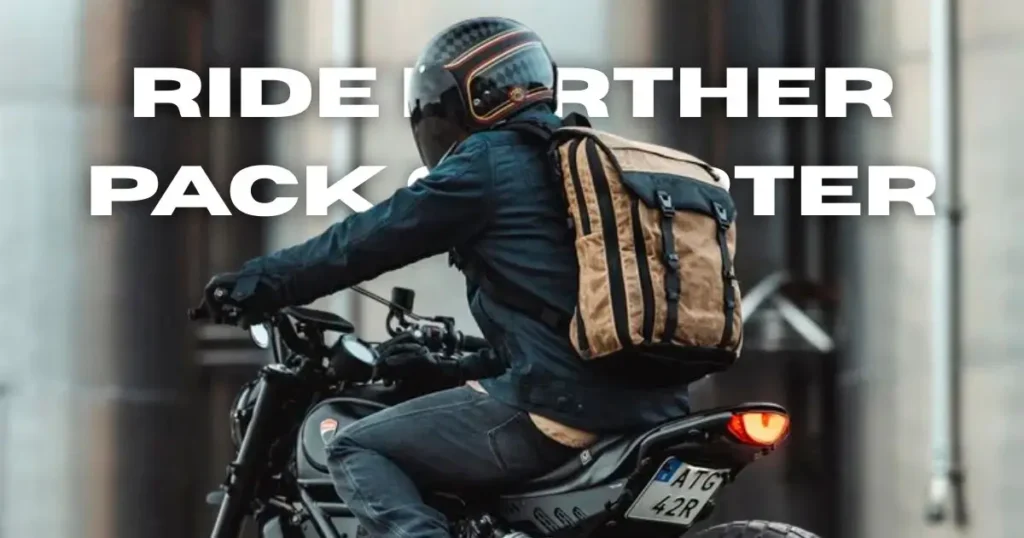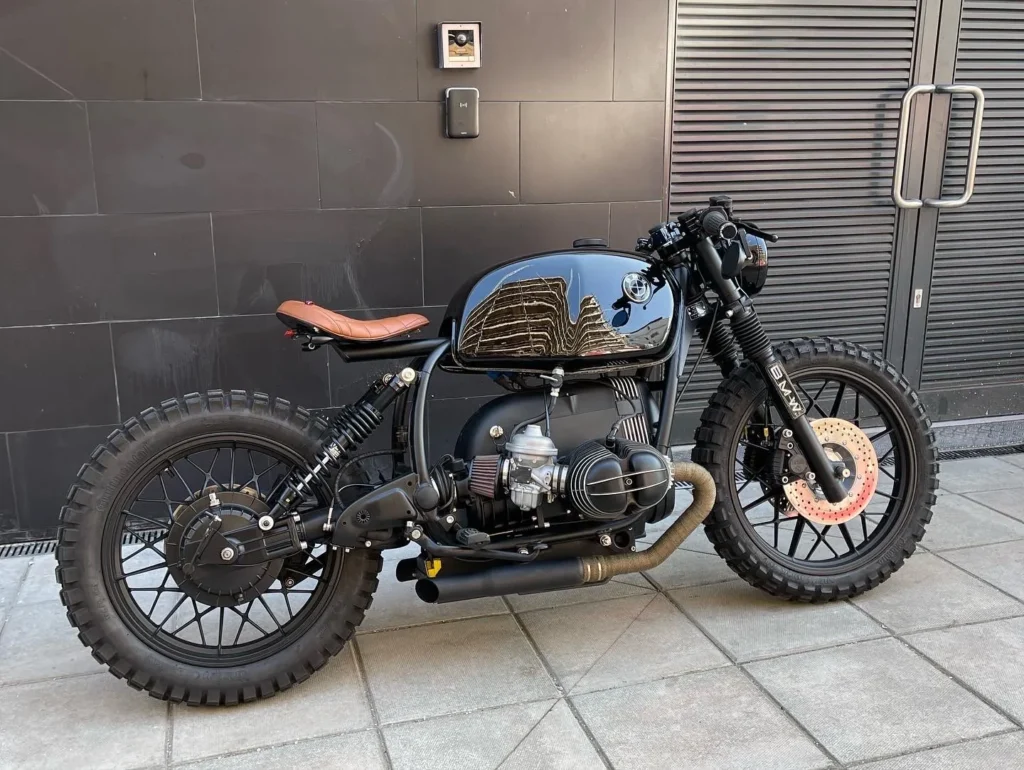Table of Contents
ToggleIf you love vintage motorcycles, the 1981 BMW R100 café racer is likely on your radar. This bike is special in the world of classic motorcycles, known for both its design and potential for custom modifications. Built originally for smooth cruising, the 1981 BMW R100 has since become a top choice for building café racers. There’s something thrilling about turning this sturdy, reliable bike into a sleek café racer that looks stylish and rides fast.
In this article, I’ll explain why the 1981 BMW R100 is great for café racer fans. We’ll look at the bike’s history and go through the steps of converting it into a café racer. We’ll cover its background, why it fits the café racer style, popular custom modifications, and key upgrades. Plus, I’ll share some unique examples of custom builds that show off the R100’s versatility and style.
So, let’s dive into the world of the 1981 BMW R100 café racer and see why this classic bike remains a favorite for custom builds.
The Story Behind the 1981 BMW R100
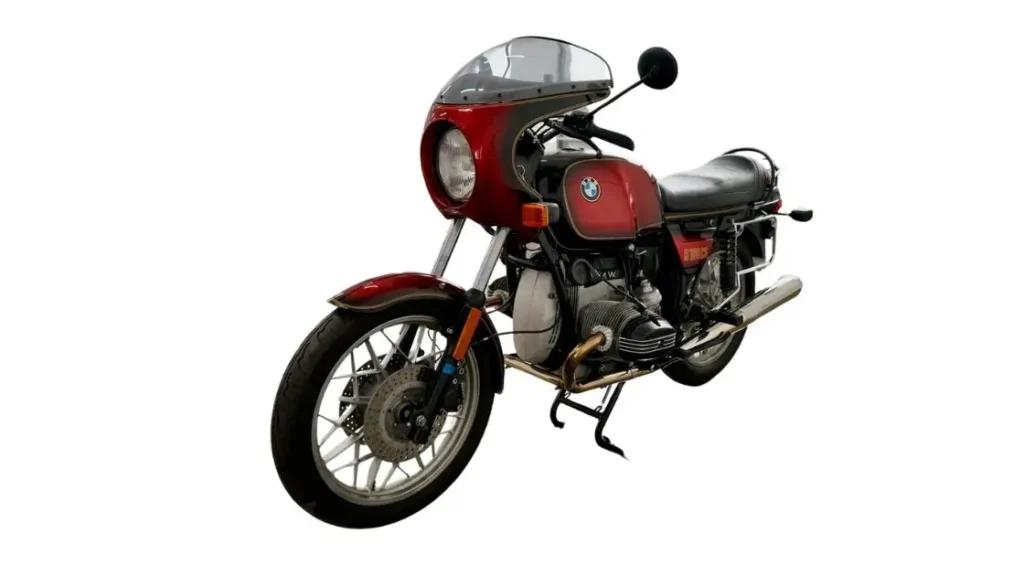
The 1981 BMW R100 holds a special place in motorcycle history. Released in the late 1970s and made into the early 1980s, the R100 was part of BMW’s “Airhead” series. These motorcycles are known for their air-cooled engines, giving them a unique look and dependable performance. The “R” in R100 stands for “Reihenmotor,” a German word meaning “inline engine.” But here, it refers to the flat-twin, or “boxer,” engine that BMW is famous for.
In 1981, the BMW R100 was a comfortable touring bike, built to handle long rides and rough roads. Its 980cc boxer engine produced around 60 horsepower, giving it enough power for city cruises and highway trips. BMW designed it to be durable, reliable, and easy to maintain. Riders loved its solid build, smooth handling, and practical design.
During this time, the café racer style was also becoming popular. People wanted bikes that were fast, stripped-down, and stylish. The 1981 BMW R100 became a great choice for building café racers because of its strong frame, powerful engine, and easy-to-modify design. With custom modifications, riders could turn this solid machine into a sleek, high-performance café racer.
Turning the 1981 BMW R100 into a Cafe Racer
Turning a 1981 BMW R100 into a café racer is a favorite project for motorcycle fans. The goal is to give the bike a sleek, simple look with speed and style. A café racer is a lightweight motorcycle built for both performance and looks. It has low handlebars, a short seat, and a stripped-down frame, making it lighter and faster with only the necessary parts.
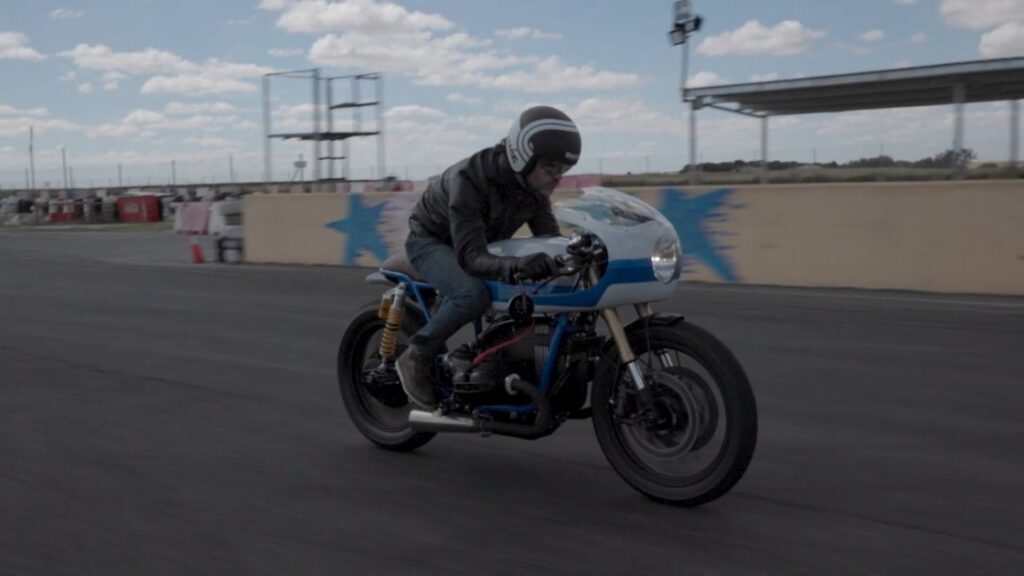
For the BMW R100, the transformation begins by removing extra weight. Builders often replace the large seat, heavy exhaust, and original fenders. This change makes the bike lighter and gives it the slim, agile look of a café racer.
The handlebars are usually swapped for lower options, like “clip-ons” or “clubman bars.” These handlebars lower the rider’s position and create a more aggressive stance, perfect for speed. The seat is also replaced with a shorter, more streamlined version to give the bike a classic, vintage look.
Another key upgrade is the exhaust system. The original exhaust is often bulky and takes up space. A custom, shorter exhaust gives the bike a louder sound and a sharper look. This change isn’t just for style—a new exhaust improves airflow and can boost performance.
Wheels and tires are also important. Many builders choose classic-style, low-profile tires. These give the bike a vintage look and improve grip and handling.
Notable 1981 BMW R100 Cafe Racer Custom Builds
Many builders have taken the 1981 BMW R100 and turned it into eye-catching café racers. Each custom build has its own look, but they all aim to make the R100 lighter, faster, and unique. Here are some well-known examples of custom R100 café racers.
Bill Costello’s Custom R100RT
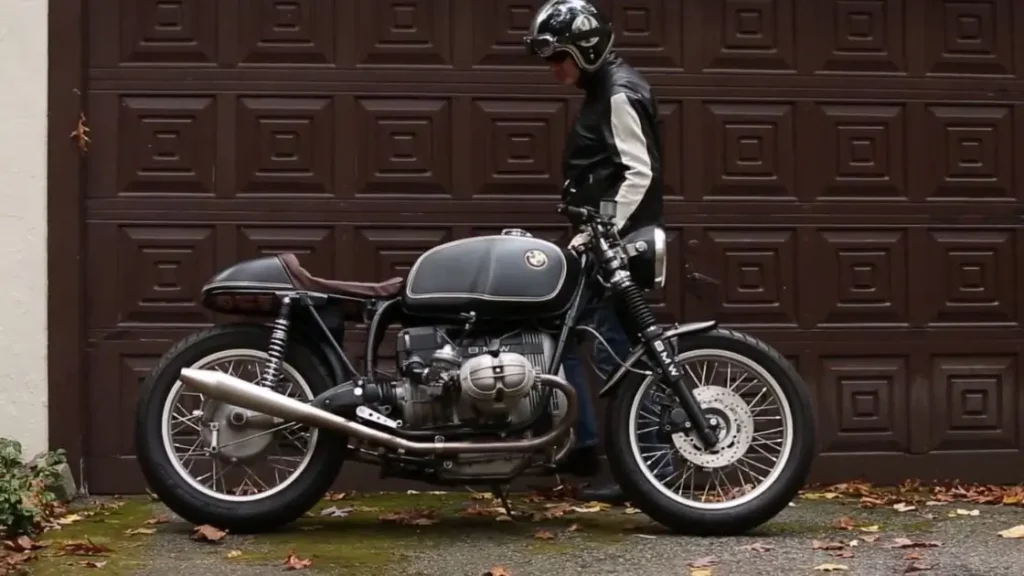
This build focuses on both style and performance. The bike’s weight dropped from 525 pounds to 430 pounds, making it easier to handle. The engine was tuned to produce around 70 horsepower for extra speed and power. Suspension upgrades make it smoother to ride, especially on curvy roads—a must for any café racer.
Lord Drake Kustoms’ R100
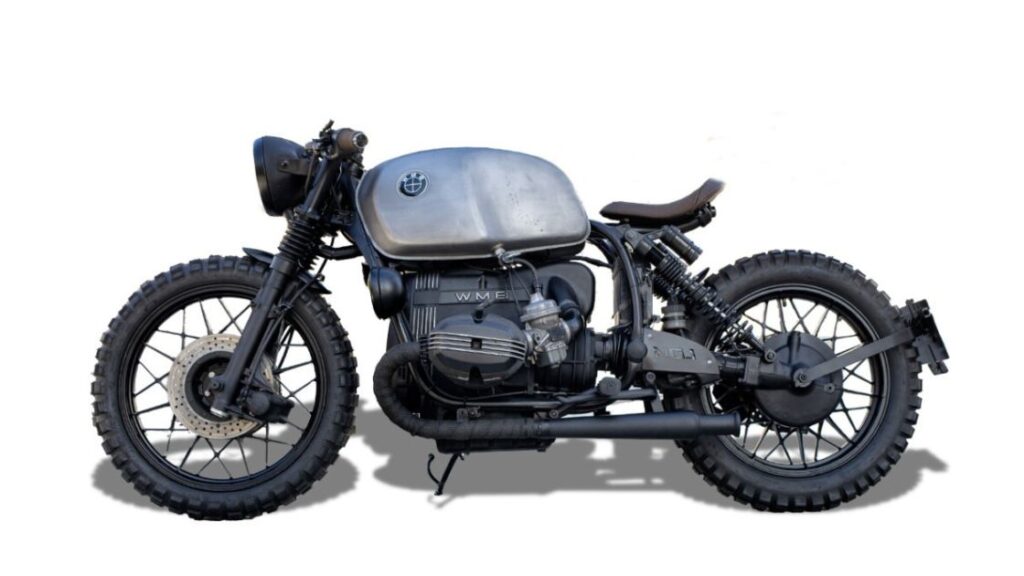
Image source: lorddrakekustoms
This R100 mixes different styles, with café racer, bobber, and scrambler features. It has a handcrafted seat for a unique look and a bold matte black paint job. Suspension modifications and a sleek, custom exhaust improve both style and performance.
Cafe Racer Dreams’ CRD124
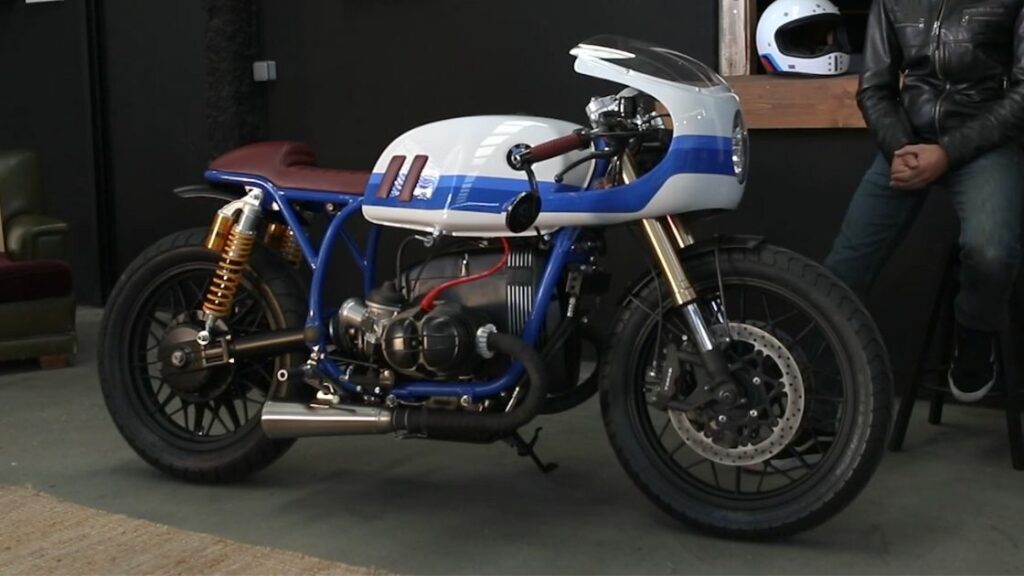
This custom R100 emphasizes detail. The engine was rebuilt for better performance. A front fork from a Suzuki GSX-R 1000 was added to improve handling and give it a modern feel. The build includes a semi-fairing design, which adds style and better aerodynamics.
Each of these builds shows the versatility of the 1981 BMW R100. From stripped-down racers to bold, stylish customs, this bike offers endless possibilities. Every builder brings their own vision, making each R100 café racer one-of-a-kind.
Essential Modifications and Upgrades for the 1981 BMW R100 Cafe Racer
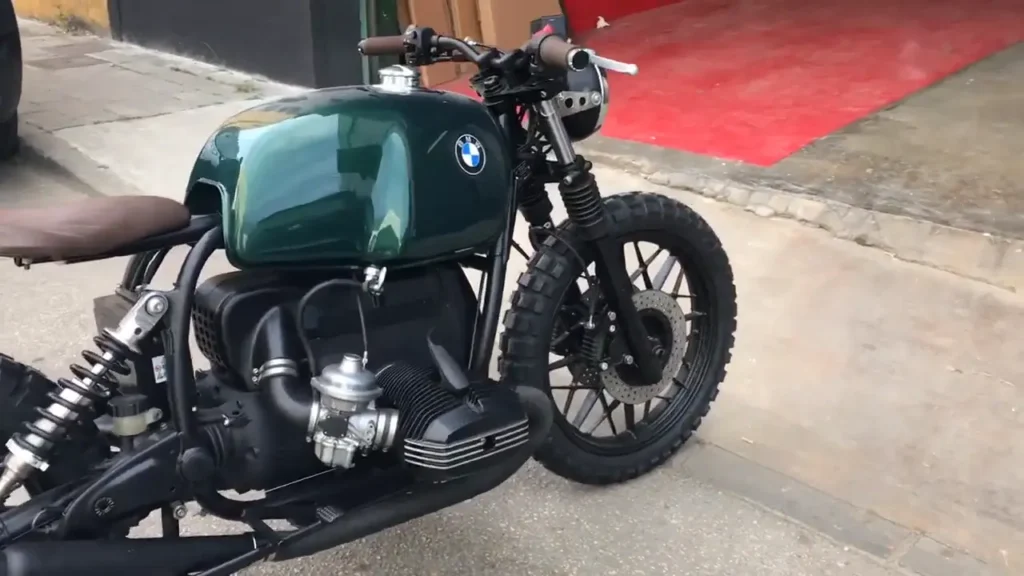
Transforming a 1981 BMW R100 into a café racer involves specific changes. These upgrades boost its look and improve its performance. Here are the most popular modifications:
Engine Enhancements
The R100’s original 980cc engine is powerful, but tuning can make it even better. Builders often add new carburetors, like trumpet-style ones, to increase fuel flow and power. Short, custom exhaust pipes are also popular. They reduce weight and improve airflow. This change gives the bike a deeper, louder sound that café racer fans love.
Suspension and Handling
For better handling, many builders replace the original front fork with a modern one, sometimes from a sportbike like a Suzuki GSX-R. Adjustable shocks and gold-valve emulators are added to improve comfort and control, especially on rough roads. These upgrades make a big difference in how the bike rides.
Aesthetic Changes
The bike’s look is essential for the café racer style. Custom seats give it a sleek, low profile. These seats are shorter and simpler than the original ones. Clip-on handlebars or clubman bars are common choices. They give the rider a forward-leaning position, ideal for a sporty, aggressive look. Unique paint jobs and custom fairings help each build stand out. Matte finishes, classic colors, and vintage decals are popular choices.
Wheels and Tires
Many builders replace the original tires with low-profile, vintage-style ones. These tires give the bike a classic look while improving grip and handling. Some builders also swap out the wheels for lightweight alloy rims. This reduces weight and enhances performance.
Each of these upgrades is part of the café racer transformation. By boosting power, handling, and style, these modifications turn the 1981 BMW R100 into a unique café racer. These changes make the bike lighter, faster, and more eye-catching.
Performance and Riding Experience of the 1981 BMW R100 Cafe Racer
The 1981 BMW R100 café racer offers an exciting ride. With the right modifications, this bike becomes fast and responsive. Riders of customized R100s often talk about the thrill and connection they feel.
Upgrades to the engine, suspension, and exhaust make the bike quicker and smoother. A tuned engine gives more power, allowing faster acceleration and a stronger pull. With a lighter frame, the bike is easier to control. This balance is key for a café racer, built to feel sporty and responsive.
Lower handlebars and a smaller seat change the riding position. These changes give the rider a forward-leaning stance, making the ride feel intense and direct. This new position puts the rider close to the road, adding to the feeling of speed.
The custom exhaust also adds to the experience. Its deep, rumbling sound makes the bike feel powerful and alive. The sound becomes part of the ride, adding energy to each twist of the throttle.
Riders often mention the bike’s smooth handling. With upgraded suspension, the R100 handles sharp turns confidently. This makes it not only fun to ride but also easy to control on different roads.
Availability and Market Considerations
Finding a 1981 BMW R100 for a café racer project can be challenging. This bike is a classic and highly valued by enthusiasts. With patience, though, you can find one on the market.
Prices for an original BMW R100 vary based on condition. Well-maintained models cost more, especially if they have low mileage. If you’re looking for a project bike that needs restoration, prices are usually lower. Some people buy “barn finds,” bikes stored for years that may need a lot of work. For building a custom café racer, this can be ideal, as you’ll replace and upgrade many parts anyway.
You might also consider buying a pre-built BMW R100 café racer. Many builders sell completed café racers, often with high-quality parts and professional work. Pre-built café racers are more expensive because you’re paying for the builder’s time, expertise, and any custom parts added.
Another thing to consider is the availability of replacement parts. The R100 was a popular model, so parts are fairly easy to find. Many websites and shops specialize in vintage BMW motorcycle parts. Whether you need a new seat, exhaust, or suspension components, there are plenty of options.
Conclusion
The 1981 BMW R100 café racer is a classic project for motorcycle fans. This bike has a solid build, a strong engine, and a style that can become truly unique. Its durable frame and reliable engine make it a popular choice for café racer conversions, blending classic charm with modern upgrades.
Transforming a stock R100 into a custom café racer involves several steps. Builders strip down the bike, tune the engine, adjust the suspension, and add custom parts. Each change moves the bike closer to the ideal café racer style—light, fast, and eye-catching. Builders add their own touch to every part, making each R100 café racer one of a kind.
Whether you’re buying a project bike to customize or choosing a ready-made café racer, the 1981 BMW R100 offers great potential. This bike has stood the test of time and remains a favorite for riders and builders alike. With its mix of vintage style and performance, this classic BMW is more than just a motorcycle—it’s a piece of history brought to life with each custom build.
FAQs
What are the Key Mods to Turn a 1981 BMW R100 into a Cafe Racer?
To make a 1981 BMW R100 into a cafe racer, you need a few key mods. Start by swapping out the handlebars for lower ones, like clip-ons, which give a sporty look and feel. Next, replace the seat with a sleek, shorter cafe racer style. An upgraded exhaust adds both style and performance, while new suspension parts help with handling on the road.
Is the 1981 BMW R100 Good for a Cafe Racer Build?
Yes, the 1981 BMW R100 is a great choice for building a cafe racer. Its solid build, strong 980cc boxer engine, and classic look make it a favorite for custom projects.
Where to Find Parts for a 1981 BMW R100 Cafe Racer?
You can get parts from shops that focus on custom bikes, like Boxer2Valve. They have a range of parts made just for cafe racer builds.
What Are Some Cool Custom Builds for a 1981 BMW R100 Cafe Racer?
Many builders have created standout versions of the 1981 BMW R100 cafe racer. Bill Costello’s custom R100RT is one example, with lighter weight and better performance. Another is Lord Drake Kustoms’ R100, which mixes cafe racer, bobber, and scrambler elements.
Any Common Issues When Customizing a 1981 BMW R100?
One known issue with older BMW R100 models (pre-1985) is with the exhaust valve. It sometimes has trouble because the fuel isn’t leaded, and BMW used the wrong valve seat material.

